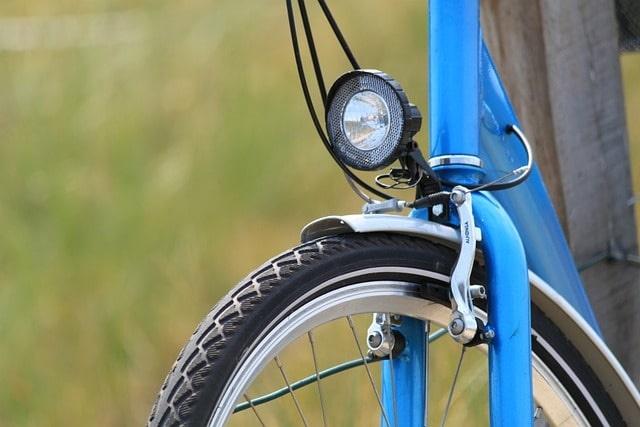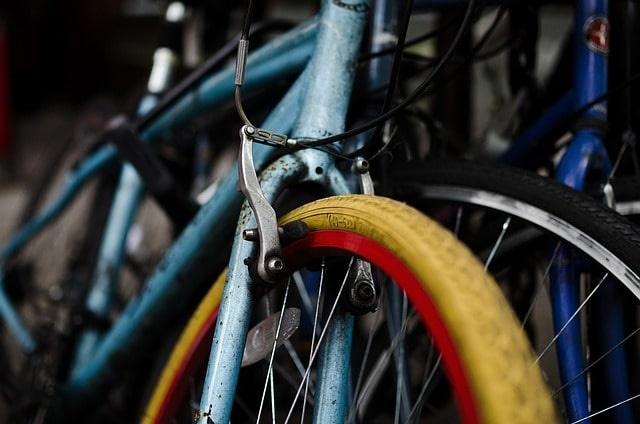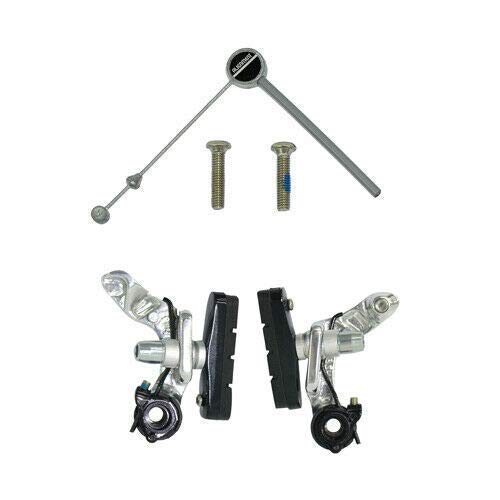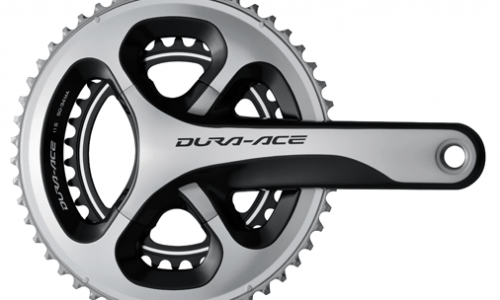Introduction
In this cycling blog post we’re going to be tackling the topic of cantilever brakes vs v-brakes and provide you with all the information you need to help you choose the most effective option for your bike setup.
Good brakes are very important to any bike setup for safety reasons, and having optimum stopping power will help keep the rider and pedestrians safe. Equally, for those riding off-road, brakes are super important especially when tackling steep descents.
So if you’re after a new braking system for your bike, which is best, cantilever or v-brakes? Read on to find out the main differences between the two systems and how it can impact overall performance.
What are Cantilever Brakes?
Definition and mechanics of cantilever brakes
Cantilever brakes are an older form of brake system that are fitted to the frame of fork of a bicycle. When the bike rider applies pressure to the brake levers, the cantilever brakes squeeze together around the rim of the bike wheel creating friction and therefore slowing the bike down.
The mechanics of cantilever brakes are quite simple – the more force that the rider applies to the brake levers the more friction that will be created and therefore the quicker the bike will stop.
Types of bikes that use cantilever brakes
Cantilever brakes have predominantly been used on mountain bikes; however they do also appear on cyclocross bikes.
I have vivid memories of my childhood bikes coming equipped with cantilever brakes but they are not so common anymore as they’ve been replaced by more efficient systems.
Pros
As with any type of braking
- Low maintenance: When I had a bike that had cantilever breaks I found that they did not need adjusting often..
- Low weight: If you’ve ever seen cantilever brakes you’ll have noticed that they’re very lightweight, which is ideal for those looking to reduce the overall weight of their bike.
- Can fit a variety of tyres: the great thing about cantilever brakes is that they can fit a wide range of tyre sizes.
- Retro look: If style is your thing, adding cantilever brakes to your bike set up will certainly give it more of a retro look.
Cons
And here are the cons:
- Difficult to make adjustments: Whilst a pro of cantilever brakes is that they don’t often need adjusting, a definite con is that when they do need adjusting this can be difficult due to them being made of several parts.
- Reduced performance in bad weather: this is the biggest con in my opinion – if you’ve ever used cantilever breaks, you’ll know that their performance can be significantly impacted in adverse weather!
- Reduced stopping power: another aspect that makes cantilever breaks a bad option is their limited performance compared to newer braking systems.
- Difficulty controlling braking power: the braking power is less precise meaning that the rider can easily overestimate the amount of force needing to apply to the brake levers
- Compatibility issues: Cantilever brakes are only compatible with certain bike set ups which means their use on newer bike models is limited.
What are V-brakes?
V-brakes are one of the most common types of braking system that you will across on many types of bike. V-brakes operate in a similar way to cantilever brakes, where the rider applies pressure to the brake lever which causes the brake pads to squeeze the rim of the wheel, causing the bike to slow down.

They get their name because of how they look – the brake arms are in the shape of a “V” and they were designed as an upgrade to the cantilever brakes, and whilst they do that in many areas, they do also have some disadvantages.

Let’s take a look at how they perform against cantilever brakes.
Comparing performance
| Performance Category | Cantilever Brakes | V-brakes |
| Stopping power | Compared with V-brakes, cantilever brakes are not as effective at producing stopping power. | V-brakes are a significant upgrade compared to cantilever brakes and if you compare the stopping power of the two types of brakes you will see that the V-brake is far superior. The fact that they have such good stopping power makes them an excellent choice for all kinds of bikes, including mountain, hybrid and some road bikes. |
| Braking control | As described earlier in this article, braking control of cantilever brakes is not as effective as V-brakes. The fact that they have less precision leaves more chance of the rider hitting the brakes too hard, or too soft and in both scenarios can lead to a bad outcome. | The V-brake offers excellent braking control compared to cantilever breaks. The upgrade in braking precision leaves the rider with more confidence of how much pressure to apply to brake levers which results in the proper amount of braking being applied. |
| Effectiveness in various weather conditions | Cantilever breaks do not perform as well when they are subjected to adverse conditions such as rain, water and mud. The impact of these conditions can lead to a further reduction in braking power and precision creating difficulties for the rider. | As expected, V-brakes offer better effectiveness in adverse weather conditions such as rain, water and mud, which is why they are a popular choice and often fitted to mountain bikes. |
| Ease of maintenance and adjustment | A positive aspect to cantilever brakes is that they are relatively low maintenance, however making adjustments can be difficult due to the fact that they are made up of several parts. | As with the cantilever brakes, V-brakes also offer a low maintenance and cost-effective option. On the occasions maintenance and adjustments are needed this is simple and can be carried out by the individual or cheaply at a bike repair shop. |
| Compatibility and Installation | As cantilever breaks require a certain bike set up, compatibility can be an issue. It’s also unlikely that newer bike models will be suitable for cantilever brakes as they are designed to fit with more modern designs. | One of the best things about V-brakes is the fact that they are compatible with so many types of bicycles. Installation is also not too onerous, but I would always recommend getting this done by a trained bike mechanic. |
| Tyre Clearance | Cantilever brakes have less tyre clearance than v-brakes which is good because it means that less mud and dirt can accumulate between the brake and wheel rim. The downside of this is this provides less options should you want to change your wheels as they would have to be fit the brake system. | The opposite is true of the v-brake system; there is more tyre clearance (meaning a potential build up of more mud and dirt) which is a negative, but a positive is the increased available options should you want to change your bike wheels. |
Conclusion

We hope that you’ve enjoyed reading this article and it has provided you with some useful information on the differences between cantilever and v-brakes.
If I was looking for a new braking system for my bike then I’d opt for a v-brake system due to the fact that this system offers greater it has greater stopping power over the cantilever style brakes, and it is now much more common meaning there are many different options to choose from.
The v-brake maintenance is also relatively straightforward, and finally, their superior effectiveness in adverse weather conditions is one of the main selling points to me, especially living in Wales where we see our fair share of adverse weather conditions.

Mike is an experienced road cyclist and mountain biker and splits his time between the two disciplines. In his spare time he can often be found tackling the big hills and mountains of mid-Wales, attempting to beat his previous times




